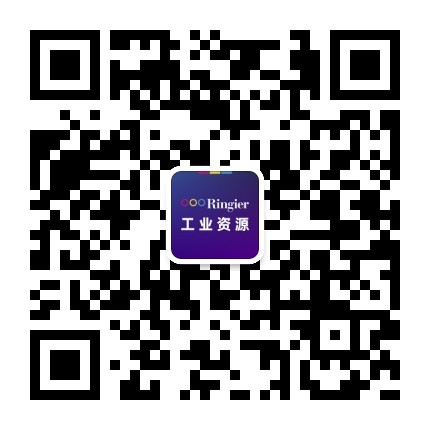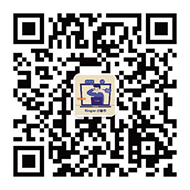By MIFLORA MINOZA- GATCHALIAN, PhD., PFT
CEO, Quality Partners Company, Ltd.
Academician Emeritus, International Academy for Quality
Eric Nubla Excellence Award- PRC Outstanding Professional for 2024
Introduction
After having successfully hurdled the FIRST and SECOND total quality challenges, the aspiring MSME is ready to start the THIRD and final Challenge towards Total Quality Management (TQM) attainment.
The latest August and September issues of FoodPacific Manufacturing Journal respectively discussed the FIRST challenge which focused on gathering the Company’s Baseline Data and Information while the SECOND challenge underscored the need for Improvement based on analysis of collected documents. The THIRD urgent total quality challenge will thus, utilize the successes gained from the FIRST and SECOND challenges which would now be directed towards the achievement of sustainable Growth in Quality, Productivity and Profitability (QPP), possibly the most urgent MSME Challenge.
In the THIRD Challenge, the primary focus areas are encapsulated by the acronym EASE: (1) Embracing the six TQM principles; (2) Achieving quality assurance; (3) Sustaining productivity improvement; and (4) Enhancing profitability. At this point, it is important to accept that meeting these urgent challenges requires full support from the business leadership whose “malasakit” (compassion) for the employees should already be clearly observed as a companywide practice. Likewise, following the leader as role model, employees are expected to have themselves imbibed “malasakit” in full support of the Company’s journey towards TQM.
(1) EMBRACING THE SIX TQM PRINCIPLES
Quality is measured in terms of the customers’ level of satisfaction with the products or services, sustained through time. Through the years, successful companies are known to be those that consistently adhere to the six TQM principles as shown in Figure 1. Note that the first principle is to “Aim for customer satisfaction” followed by principles necessary to achieve this goal. Each principle emphasizes actions which must become a mindset of the company’s workforce (Management and Staff). Once embedded as a regular practice, the journey towards TQM becomes more achievable. Thus, constant review of the TQM principles is most essential for sustainability of the company’s industry leadership through TQM.

(2) ACHIEVING QUALITY ASSURANCE
Quality development and continuous improvement is a long-term process and requires patience and commitment first from top management and then from everyone in the company. These are the two major practices, which, when sustained through time, will describe the existence of systematic processes accompanied by a high-level employee engagement. These are the two basic descriptors for quality assurance (QA) to be in place (Weaver, 1991). However, to arrive at this situation, the FIRST and SECOND total quality challenges must be proven to have been fully overcome before the THIRD total quality challenge is initiated. For QA to be attained, the overall company processes should first be put in place, making it imperative for everyone to have a common understanding of what a “process” is all about as shown in Figure 2a (Gatchalian, J.C. and Gatchalian, M.M. 2004).

Since customer satisfaction determines the success of any business enterprise, it is imperative that their changing needs and expectations are constantly identified and monitored through time. This is especially so since hearing the “voice of the customer” provides the necessary information for the company resources (5Ms) to develop processes which dictates the way everyone works in order to produce the products or services required by the customer. To ensure that these requirements are properly measured and monitored, “Statistical Methods” are utilized which basically describe the “voice of the process”. With effective controls of a totally systematic operation, “Quality Assurance” will thus, be in place. It would be of great value for MSMEs to see an example of a process flow which had been designed to ensure control of product quality as shown in (Kanduri and Eckhardt, 2002). Observe that every step in the process needs to have specification limits with proven effectiveness and efficiency such that defectives are close to zero and product quality has achieved the targeted level of customer satisfaction. MSMEs should learn to set up the process flow starting from the raw materials down to storage and distribution of finished goods.

With a determined leadership and committed staff, standardization of processes together with proper use of measures and monitoring systems, the company will eventually achieve quality assurance. This important development occurs when the 5Ms (Manpower, Materials, Methods, Machines and Measurements) have been given full and effective attention in the FIRST and SECOND urgent total quality challenges.
(3) SUSTAINING PRODUCTIVITY IMPROVEMENT
In many occasions, productivity has been equated with efficiency especially since both are concerned with outputs in a given period of time (Weaver, 1991). Likewise, both are focused on the volume of production at a given time. However, Productivity is measured mainly on the amount of production at a given length of time, with the assumption that all the 5Ms (Resources) were in complete control. On the other hand, Efficiency’s major consideration includes measurement of Manpower’s utilization of all the other Ms in the most effective way resulting to production time reduction. For this major difference, TQM can enhance Efficiency through Manpower’s capability to control their performance on the following: (a) design, workmanship, equipment and raw materials; (b) consideration of training, cost and time; and (c) in TQM via SUGOD (Survey, Unite Grow, Operationalize, Develop), the first four Phases (S-U-G-O) plays a crucial role in continual improvement, a major TQM principle.
Figure 3 represents a systems view for implementing total quality in the enterprise (Gatchalian, 2015). The big circle shows the various factors necessary in sustaining employee engagement (inner circle) which subsequently contributes to the attainment of customer satisfaction. This is why the big circle is linked via a forward- backward arrow which carries WPC (Workplace Cooperation) to be achievable via the SUGOD for TQM approach, with focus on customer satisfaction (measure of quality). Also shown at the bottom is a baseline bar linked upward with three vertical forward-backward arrows and this emphasizes the fact that WPC via SUGOD is the foundation for TQM attainment and sustainability.

(4) ENHANCING PROFITABILITY
The final destination of the TQM journey is to achieve a business situation whereby sustainable enhancement of profitability can be obtained first from development of “quality assurance” supported by continual productivity improvement. Both are the pre-requisites towards business success measured mainly on Enhanced Profitability. Figure 4 shows a profitability measurement which emphasizes the significance of systematic approaches to ensure continual quality and productivity improvement. Thus, other cost contributors that deserve serious attention are also presented to provide guidance in the process of identifying areas for improvement. If left unchecked these contributors could increase production cost which in turn, would greatly affect profitability. In general, a business is so organized to ensure profitability in order to remain competitive among its peers.

To this end, many approaches had been promoted to achieve business success and “SUGOD for TQM” is just one of them. However, through the leadership of the Department of Science and Technology (DOST) with support from QPCL, this proposed approach was tested nationwide (across all 16 regions) on at least 20 MSMEs for a period of almost three years. The MSME testimonials and their current business status assessed via the Philippine Quality Award (PQA) and its variations show the high potentials for success. For this reason, MSMEs are encouraged to respond to these THREE urgent total quality Challenges.
Conclusions and recommendations
The THIRD urgent total quality challenge is focused on the last stage in the journey to TQM and this involves four major challenges with acronym EASE or:(1) Embracing the six TQM principles; (2) Achieving quality assurance; (3) Sustaining productivity improvement; and (4) Enhancing profitability. Suggested approaches to achieve these challenges were presented, where the details of implementation would require mentoring from knowledgeable consultants. Currently. the possible sources of “SUGOD for TQM” Mentors would be from the first Certified DOST-Consultant-Trainer-Coach (C-DCTC) and partner Consultants from Quality Partners Company Limited (QPCL). From the national statistics, 99.6% of all businesses are from the MSMEs which implies the urgency to utilize the best approach to assist them so that the Philippines’ economic progress can be accelerated. This challenge for a sustainable assistance to the MSMEs is extended to all those with capability to assist and to all MSMEs which are urged to get interested in improving their approaches towards the achievement of QUALITY, PRODUCTIVITY and PROFITABILITY via the “SUGOD for TQM” methodology.
REFERENCES
Fliehman, Deborah G. and Auld, David D. 1993. Customer Retenion Through Quality Leadership. ASQ Quality Press. 611 East Wisconsin Avenue, Milwaukee, Wisconsin 532022
Gatchalian, M.M. 2015. Filipino “SUGOD” (move-on together): Roadmap/Framework for a Sustainable Quality Improvement. Proceedings. 1st International Academy for Quality World Quality Forum (IAQ-WQF). Oct. 26-28, 2015. Kempinski Hotel, Budapest, Hungary,
Gatchalian, J.C. and Gatchalian, M.M. 2004. Labor Management Cooperation in the New Millenium. Quality Partners Company, Ltd. Quezon City, Philippines. 300pp.
Kanduri, Laxman and Eckhardt, Ronald A. 2002. Food Safety in Shrimp Processing: A Handbook for Shrimp Processors, Importers, Exporters and Retailers. Fishing News Books. N.Y. U.S.A.
Weaver, Charles N. 1991. TQM: A Step-by-Step Guide to Implementation. ASQ Quality Press. 611 East Wisconsin Avenue, Milwaukee, Wisconsin 532022














